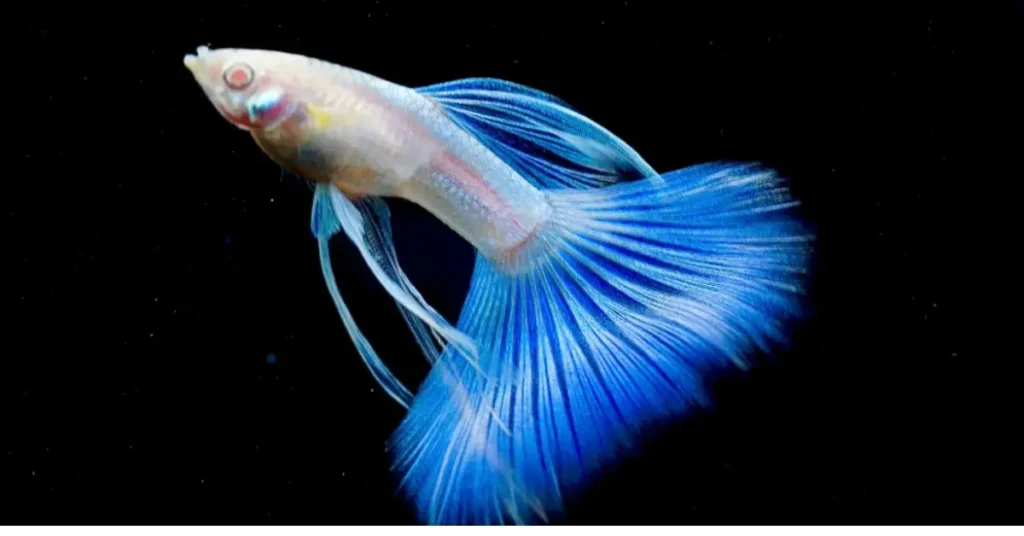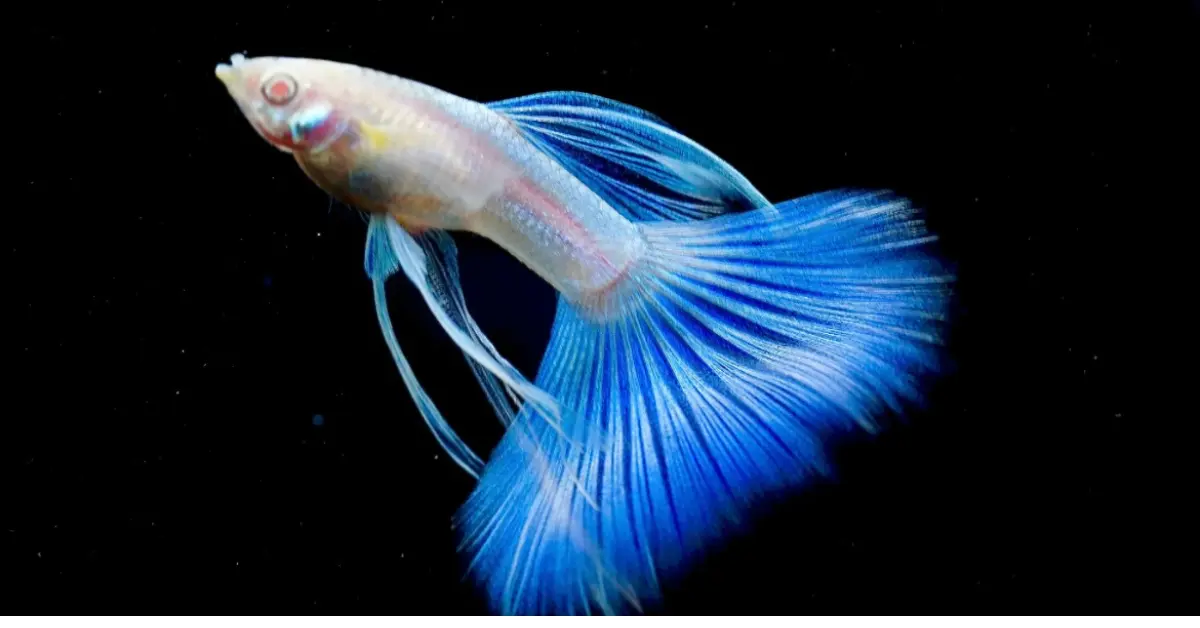
When it comes to vibrant freshwater aquarium fish, guppies are among the most popular choices for both beginners and seasoned aquarists. Among the many stunning varieties, the Topaz Guppy stands out with its mesmerizing hues and graceful fins. Known for its radiant colors and peaceful nature, the Topaz Guppy has become a favorite among aquarists who appreciate beauty, ease of care, and genetic diversity in their tanks.
In this comprehensive guide, we will explore everything you need to know about the Topaz Guppy—from its origins and appearance to tank setup, breeding, care, and compatibility. Whether you’re a hobbyist looking to add a splash of color to your aquarium or a breeder seeking to enhance your stock, the Topaz Guppy is an excellent choice.
What is a Topaz Guppy?
The Topaz Guppy is a selectively bred strain of the Poecilia reticulata species, known for its sparkling blue, yellow, and metallic tones that resemble the semi-precious topaz gemstone. With its shimmering scales and dynamic coloration, the Topaz Guppy captures attention immediately.
Origins
Topaz Guppies are the result of selective breeding techniques aimed at enhancing specific color patterns. They originate from the common guppy, a fish native to South America, particularly in countries such as Venezuela, Trinidad, and Guyana. The guppy was introduced to aquarists in the early 1900s and has since evolved into hundreds of fancy strains, with the Topaz variety being one of the more recent and striking developments.
Appearance and Characteristics
Coloration
The defining feature of the Topaz Guppy is its bright and vivid coloration. Males typically display a brilliant metallic blue body with hints of yellow or gold around the dorsal and caudal fins. This stunning iridescence, especially under proper lighting, makes them a dazzling centerpiece in any tank.
Females, although generally less colorful than males, still retain hints of the topaz hue, especially when high-quality genetics are involved.
Fin Types
Topaz Guppies can be found with various fin shapes:
- Delta Tail: Wide and triangular like a fan.
- Ribbon Tail: Long and flowing, adding elegance.
- Lyretail: With pointed upper and lower edges, resembling a lyre.
These variations add further beauty and uniqueness to this guppy strain.
Size
- Males: 1.5 to 2 inches
- Females: 2 to 2.5 inches
Despite their small size, Topaz Guppies make a big impact visually.
Ideal Tank Setup for Topaz Guppies
Creating a suitable habitat is crucial for maintaining the health and vibrant coloration of your Topaz Guppies.
Tank Size
A minimum of 10 gallons is recommended for a small group of Topaz Guppies. However, if you plan to breed them or maintain a larger community, consider 20 to 30 gallons or more.
Water Parameters
- Temperature: 72–82°F (22–28°C)
- pH: 6.8–7.8
- Hardness: 8–12 dGH
- Ammonia/Nitrite: 0 ppm (always!)
- Nitrate: < 20 ppm
Regular testing and water changes (20–30% weekly) will ensure a healthy environment.
Filtration and Aeration
A sponge filter or hang-on-back filter is ideal for guppies, as they prefer gentle currents. Adequate aeration helps maintain oxygen levels, especially in well-stocked tanks.
Lighting
Proper lighting will enhance the iridescence of Topaz Guppies. Use LED lights that simulate natural daylight to bring out their topaz shimmer.
Substrate and Decor
- Fine gravel or sand as substrate
- Live plants like Java moss, Hornwort, or Anubias
- Hiding spots using driftwood or rock caves
Plants help mimic their natural environment and provide fry with hiding spots if breeding occurs.
Diet and Feeding
Topaz Guppies are omnivores and thrive on a varied diet. Providing a balanced and nutrient-rich diet will enhance their coloration and boost their immune system.
Recommended Foods
- High-quality flake food with spirulina or color enhancers
- Frozen or live foods: Brine shrimp, daphnia, bloodworms
- Vegetables: Blanched spinach, zucchini, or peas (as occasional treats)
- Pellets or micro granules designed for tropical fish
Feed 2–3 times daily in small amounts they can consume in under two minutes. Avoid overfeeding to prevent water quality issues.
Breeding Topaz Guppies
Guppies are livebearers, meaning they give birth to free-swimming fry instead of laying eggs. Breeding Topaz Guppies can be both fun and rewarding.
Male vs. Female Identification
- Males: Smaller, more colorful, with a gonopodium (a modified anal fin used for mating)
- Females: Larger, rounder abdomen, duller in color, and a visible gravid spot near the tail
Breeding Tank Setup
For controlled breeding:
- Use a separate 10–20 gallon breeding tank
- Include dense plants or breeding boxes for fry protection
Mating and Gestation
Males often chase females to mate. Once successful, the female can store sperm and give birth multiple times over several months. Gestation lasts 21–30 days.
Fry Care
- Feed newly born fry infusoria, baby brine shrimp, or crushed flakes
- Keep them in a separate tank until they’re large enough not to be eaten by adults
Topaz Guppy fry inherit their parent’s coloration gradually, becoming more vibrant after 4–6 weeks.
Common Diseases and Health Tips
Topaz Guppies are hardy fish but still susceptible to common freshwater diseases.
Common Issues
- Ich (White Spot Disease): Treat with increased temperature and aquarium salt or commercial medication.
- Fin Rot: Caused by poor water conditions; treat with water changes and antibacterial meds.
- Swim Bladder Disease: Usually due to overfeeding or constipation; feed peas and monitor diet.
- Parasites: Quarantine new fish before adding to your main tank.
Prevention Tips
- Regular water testing and changes
- Quarantine new fish for 2–4 weeks
- Avoid overfeeding
- Maintain a clean, well-aerated environment
Compatibility and Tank Mates
Topaz Guppies are peaceful and do best with other non-aggressive species.
Compatible Tank Mates
- Other Guppies
- Mollies
- Platies
- Corydoras catfish
- Tetras (like Neon or Ember)
- Otocinclus
- Snails (like Nerite or Mystery)
- Shrimp (Ghost or Amano)
Avoid
- Aggressive fish like Betta males, Cichlids, or Barbs
- Large fish that may see guppies as food
A peaceful community tank will allow your Topaz Guppies to thrive and display their best behavior and colors.
Topaz Guppy in Aquascaping
Because of their vibrant appearance, Topaz Guppies make an excellent addition to aquascaped tanks. Their shimmering colors stand out beautifully against lush greenery or dark backgrounds. Use:
- Driftwood and rocks for contrast
- Floating plants to diffuse light
- Background plants for color framing
Their active swimming patterns also create dynamic movement within the aquarium layout.
Buying Topaz Guppies
When purchasing Topaz Guppies, look for reputable breeders or fish stores that focus on quality genetics. Healthy guppies will have:
- Clear eyes
- Intact fins
- Bright colors
- Active swimming behavior
Avoid fish with clamped fins, spots, or sluggish behavior.
Price Range
Topaz Guppies can range from $5 to $20 per fish, depending on their fin type, coloration, and breeding lineage.
Why Choose Topaz Guppies?
Here’s why Topaz Guppies make a fantastic addition to your tank:
✅ Striking Appearance: Their metallic hues are unmatched
✅ Easy to Care For: Perfect for beginners
✅ Peaceful Temperament: Ideal for community tanks
✅ Active Swimmers: Bring life to your aquarium
✅ Breeding Potential: Fun and rewarding to breed
✅ Hardy: Adapt well to various tank conditions
Types Of Topaz Guppy
Topaz Guppies are popular for their shimmering blue and gold coloration, often displaying an iridescent or metallic quality. Over time, selective breeding has resulted in several variations of the Topaz Guppy, each with distinct traits in body color, tail shape, and pattern. Here are some common types:
1. Topaz Blue Guppy
- Color: Bright metallic blue with hints of turquoise and silver.
- Tail Shape: Commonly delta or fan-shaped.
- Highlights: The body often reflects a gemstone-like shimmer, mimicking a real topaz stone.
2. Topaz Yellow Guppy
- Color: A blend of golden yellow and blue hues.
- Tail Shape: Often round or triangle (delta).
- Highlights: The golden yellow color adds warmth to the metallic blue body, creating a vibrant contrast.
3. Topaz Albino Guppy
- Color: Soft pastel blue and yellow with a pinkish or reddish eye (albino trait).
- Tail Shape: Ribbon or fan-shaped.
- Highlights: The albino gene reduces melanin, resulting in a paler yet striking appearance.
4. Topaz Big Ear Guppy
- Color: Blue and gold with oversized pectoral fins (the “big ears”).
- Tail Shape: Can vary—commonly fan or spade-shaped.
- Highlights: The enlarged pectoral fins move gracefully in water, adding beauty to the guppy’s movements.
5. Topaz Mosaic Guppy
- Color: Blue body with a multicolored mosaic tail (often red, orange, or yellow patterns).
- Tail Shape: Wide delta or lyretail.
- Highlights: Striking mosaic patterns create a vivid display of color and texture.
6. Topaz Dumbo Ear Guppy
- Color: Metallic topaz body with striking, oversized pectoral fins.
- Tail Shape: Delta or veil tail.
- Highlights: A showstopper in aquariums due to its elegant swimming style and brilliant coloration.
Final Thoughts
The Topaz Guppy truly lives up to its name, shining like a gemstone in any aquarium it inhabits. With its vivid colors, elegant fins, and low-maintenance care requirements, it’s no surprise this variety is gaining popularity among aquarists worldwide.
Whether you’re a beginner looking to start your guppy journey or an experienced fishkeeper expanding your collection, the Topaz Guppy is a stunning and satisfying choice. With the right environment, care, and attention, these living jewels will dazzle your tank for years to come.
Frequently Asked Questions (FAQs)
Q1: How long do Topaz Guppies live?
A: With proper care, Topaz Guppies live between 2 to 3 years.
Q2: Can I keep Topaz Guppies in a planted tank?
A: Yes, they thrive in planted tanks, which also provide hiding spots and improve water quality.
Q3: Are Topaz Guppies suitable for children or beginner aquarists?
A: Absolutely. They are hardy, easy to feed, and visually appealing—great for beginners.
Q4: How many Topaz Guppies should I keep together?
A: At least 3 to 5, with a ratio of one male to two or more females to avoid stress.
Q5: Do Topaz Guppies change color over time?
A: Juveniles may develop more intense coloration as they mature, especially under good lighting and diet.

